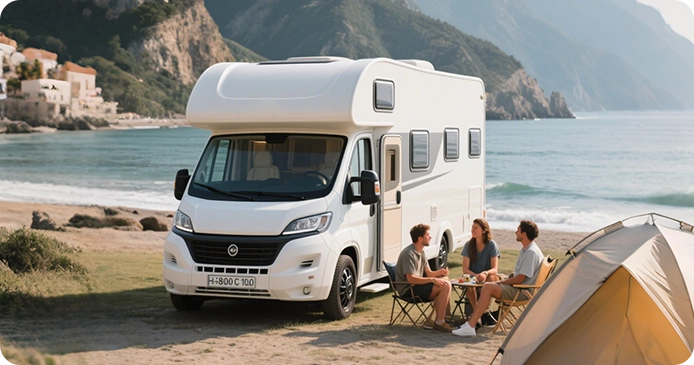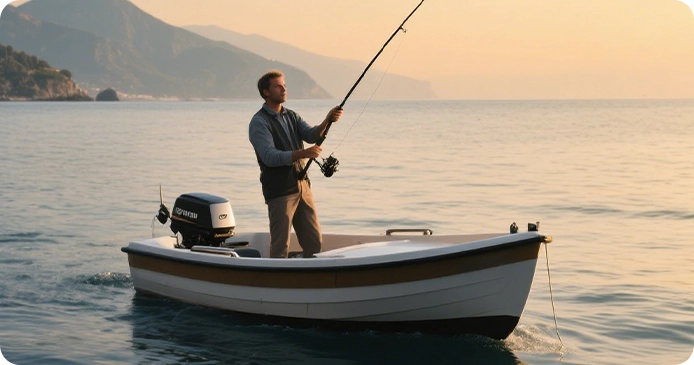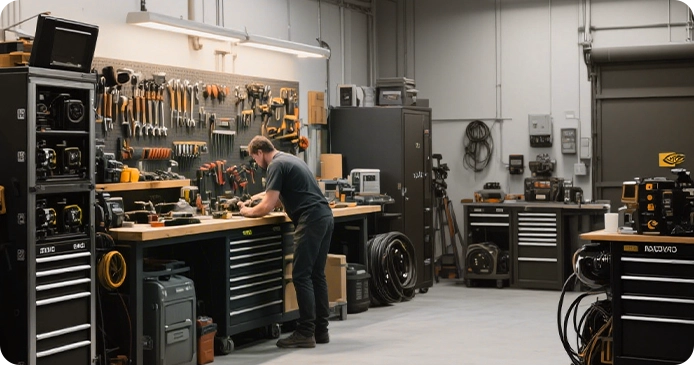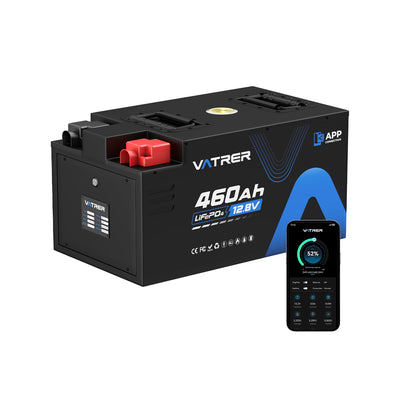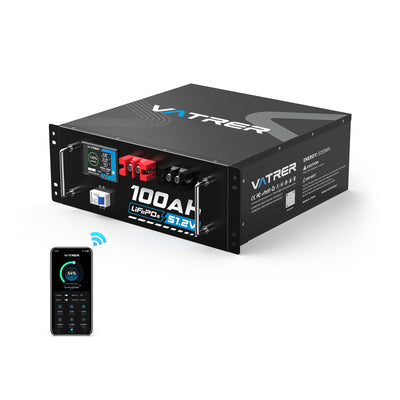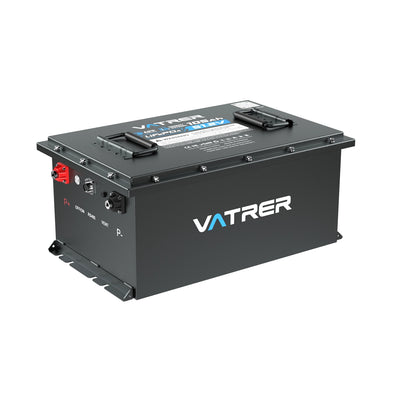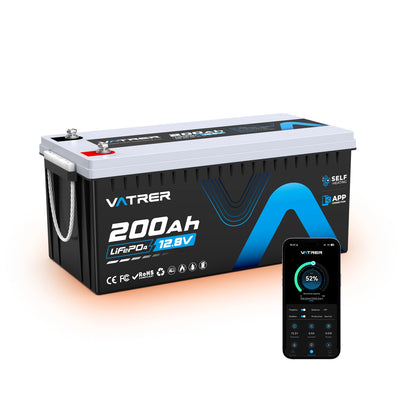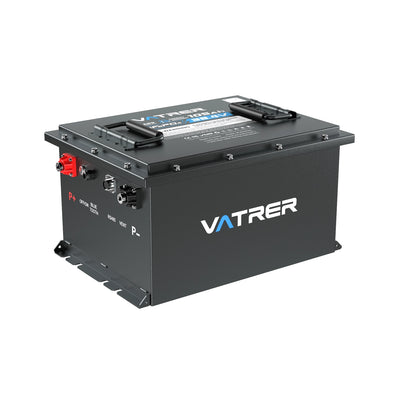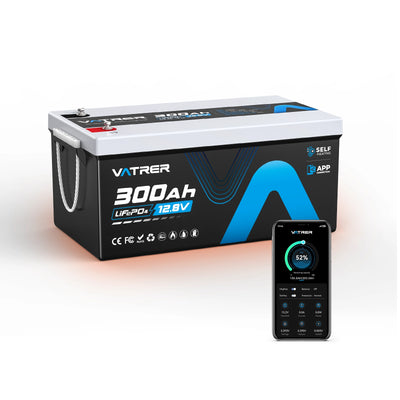
12V Battery Showdown: Technical Comparison of FLA vs. AGM vs. Lithium (LiFePO4) for RV, Marine & Off-Grid Use
Discover the electrochemical differences between lead-acid and lithium batteries. Learn how cycle depth, charge efficiency, and BMS integration impact performance in demanding applications.
Hey there! I know that picking the right 12V battery can make all the difference, whether you're powering your bass boat, RV, golf cart, or even a critical backup system.
It's not just about grabbing any battery off the shelf; it's about matching the technology to your specific needs for peak performance, reliability, and getting the most bang for your buck.
Here, give you the straight scoop on the main types of 12V batteries out there, so you can make an informed choice and keep your gear running smoothly.
Key Takeaways Before We Dive In
-
Know Your Types: We'll explore the big four:
traditional Flooded Lead-Acid (FLA),
maintenance-free Gel,
AGM (Absorbent Glass Mat) lead-acid types,
and the increasingly popular Lithium-ion (specifically LiFePO4). -
Match the Battery to the Job: Consider
capacity (Amp-hours),
how you'll use it (starting vs. deep cycle),
size and weight constraints,
and how much you plan to drain it (Depth of Discharge). - Lifespan & Care: Proper charging and avoiding extreme temperatures are your best friends for extending any battery's life.
So, What Exactly is a 12V Battery?
Think of a 12-volt battery as a rechargeable power pack designed to deliver a steady 12 volts of direct current (DC). Most we're talking about here are "deep cycle" batteries, meaning they're built to provide sustained power over long periods and then be recharged, ready for the next adventure.
These batteries are the heart of many systems. They crank over engines in cars and boats (these are often "starting batteries" designed for a quick, powerful burst), but they also run trolling motors, fish finders, RV lights and appliances, and power off-grid solar setups. The magic happens through a chemical reaction inside that converts stored chemical energy into electrical power.
Choosing the right type is crucial because each has its own personality – some need regular check-ups, others are set-it-and-forget-it, and they all differ in lifespan and how much power they can pack.
Different Types of 12-Volt Batteries
Let's break down the 4 main types you'll encounter:

-
Flooded Lead-Acid (FLA) Batteries: The Old Workhorse These are your traditional, often most affordable, batteries. They have lead plates hanging in a bath of liquid sulfuric acid (electrolyte). For a long time, they were the go-to for starting engines and still are in many cases.
-
Pros:
- Lowest Upfront Cost: Generally the cheapest to buy.
- Widely Available: Easy to find just about anywhere.
- Good for High Current Discharge: Can deliver strong cranking amps for starting.
-
Cons:
- High Maintenance: You've got to regularly check electrolyte levels and top off with distilled water.
- Must Be Upright: Install them level, or acid can spill.
- Gassing: They release hydrogen gas during charging, so they need to be in a well-ventilated area. This gas can be explosive.
- Acid Spills & Corrosion: Spilled acid is corrosive and a safety hazard.
- Limited Depth of Discharge (DoD): Routinely discharging them more than 50% of their capacity will drastically shorten their life.
- Shorter Lifespan: Typically 2-5 years, depending on use and care.
-
Pros:
-
Gel Batteries: A Sealed, Low-Maintenance Lead-Acid Gel batteries are a type of Valve-Regulated Lead-Acid (VRLA) battery where the electrolyte is mixed with silica to create a thick, gel-like substance. This means no liquid to spill.
-
Pros:
- Maintenance-Free: Sealed design, no need to add water.
- Spill-Proof & Flexible Mounting: Can be mounted in various orientations (though upside down is usually not recommended).
- Good in Higher Temps: Handle heat a bit better than FLAs.
-
Cons:
- Sensitive Charging: Need specific charge controllers and slower charging cycles at lower voltages. Overcharging can kill them quickly.
- Not for High Current: Don't like rapid discharging or recharging.
- Still Limited DoD: Like FLAs, best not to discharge below 50%.
- Lifespan: Similar to FLAs, around 2-5 years, very dependent on proper charging.
- Higher Cost than FLA.
-
Pros:
-
AGM (Absorbent Glass Mat) Batteries: The Tougher, Sealed Lead-Acid AGMs are another type of VRLA battery. Here, the electrolyte is absorbed into fine fiberglass mats sandwiched between the lead plates. They're popular in RVs, boats, motorcycles, ATVs, and even for backup power.
-
Pros:
- Maintenance-Free & Sealed: No watering, no gassing in normal operation.
- Flexible Mounting: Mount them how you need to (again, avoid upside down).
- Longer Lifespan than FLA/Gel: Typically 4-7 years.
- Better DoD: Can generally be discharged deeper than FLAs or Gels (around 60-70% is often cited, but always check manufacturer specs).
- Handles Vibration Well: Great for off-road or marine use.
- Faster Charging: Can accept a higher charge current than Gels or FLAs.
-
Cons:
- More Expensive than FLAs and Gels.
- Heavy: Still a lead-acid battery, so they pack some pounds.
- Sensitive to Overcharging: While better than Gels, overcharging can still damage them.
-
Pros:
-
Lithium-Ion Batteries (Specifically LiFePO4 - Lithium Iron Phosphate) When we talk about 12V lithium batteries for deep cycle use, we're almost always talking about LiFePO4. This chemistry offers a fantastic balance of performance, longevity, and safety compared to other lithium types or lead-acid.
-
Pros:
- Super Lightweight: Often half the weight (or less!) of lead-acid batteries of similar usable capacity.
- Incredible Lifespan: Can last 10+ years and thousands of charge cycles.
- Deepest Discharge: You can safely use 80-100% of their rated capacity.
- Fast & Efficient Charging: Charge up quicker and waste less energy.
- No Maintenance.
- Stable Voltage: Deliver consistent power even as they discharge.
- Built-in Battery Management System (BMS): This is a game-changer. The BMS protects the battery from over-charging, over-discharging, high/low temperatures, and over-current, which is key to their safety and long life.
- Mount in Any Orientation.
-
Cons:
- Highest Upfront Cost: They are the priciest option by a good margin.
- Specific Charger Needed: Requires a lithium-compatible charger or a charger with a lithium (LiFePO4) setting.
- Cold Weather Charging Limitations: Most standard LiFePO4 batteries cannot be charged below freezing (32°F or 0°C) without potential damage. Some premium models have built-in heaters (Vatrer 12V 460Ah Self-heating Lithium RV Battery) to overcome this. Discharging in the cold is generally fine, though capacity might be temporarily reduced.
-
Pros:
Factors to Weigh When Choosing Your 12V Battery
Okay, so you know the types. Now, how do you pick your battery?
-
What's the Job? (Intended Application)
- Starting engines? You need high Cold Cranking Amps (CCA). AGM or even a good FLA can work.
- Running electronics for hours (RV, boat, solar)? You need a deep cycle battery. LiFePO4 and AGM are top contenders here. A LiFePO4 setup, especially with solar, can give you power for days.
-
Budget – Upfront vs. Long-Term Value : Prices can range from under $100 for a small FLA to over $1,000 for a high-capacity LiFePO4. Don't just look at the sticker price. A LiFePO4 battery might cost 3-4 times an AGM upfront, but if it lasts 5-10 times longer and gives you more usable power, the total cost of ownership (TCO) can actually be lower. Think about how many times you'd replace a cheaper battery over the lifespan of one lithium.
-
Maintenance – How Hands-On Do You Want to Be? If you don't want to fuss with checking water levels or worrying about spills, steer clear of FLAs. AGM, Gel, and LiFePO4 are all maintenance-free.
-
Capacity (Amp-hours - Ah) : How much juice do you need? This depends on what you're powering and for how long. Add up the amp draw of your devices and estimate your daily usage. Remember, with lead-acid, you only want to use about 50% of the rated Ah to preserve lifespan, while with LiFePO4, you can use almost all of it. So, a 100Ah LiFePO4 gives much more usable energy than a 100Ah lead-acid.
-
Size, Weight, and Energy Density : Got limited space or need to keep weight down (think RVs, boats, portable setups)? LiFePO4 is the clear winner here, packing more power into a lighter, often smaller package.
-
Cycle Life & Depth of Discharge (DoD) : How many times can you charge and discharge the battery? And how much of its capacity can you actually use each time? LiFePO4 offers thousands of cycles at deep DoD (80-100%). Lead-acid batteries offer far fewer cycles, especially if you consistently discharge them deeply.
-
Charging System Compatibility : Make sure your vehicle's alternator, RV converter, boat charger, or solar charge controller is compatible with your chosen battery type. LiFePO4 batteries, in particular, benefit from chargers with specific lithium charging profiles.
Pro Tips for Making Your 12V Battery Last
No matter which battery you choose, these tips will help you get the most life out of it:
- Charge it Right: Use a quality charger designed for your battery type. Multi-stage smart chargers are excellent.
- Avoid Over-Discharging: Especially critical for lead-acid. Know your battery's limits.
- Temperature Matters: Extreme heat kills batteries faster. Cold can reduce performance and, for lithium, prevent charging (unless it has a heater).
- Keep it Secure: Vibration isn't a battery's friend. Make sure it's properly mounted.
- Clean Connections (for Lead-Acid): Keep those terminals clean and free of corrosion.
- Regular Checks: For FLAs, check water levels. For all types, periodically check that connections are tight.
The Bottom Line: Invest Wisely for Reliable Power
Choosing the right 12V battery boils down to understanding your specific needs and how different battery technologies meet them.
FLAs are the budget entry point.
Gels offer a sealed, low-maintenance step up.
AGMs provide a robust, maintenance-free lead-acid option with better performance and lifespan than FLAs or Gels, making them a solid all-around choice for many.
However, if your budget allows for the upfront investment, LiFePO4 batteries are increasingly becoming the gold standard for deep cycle applications. Their long life, deep discharge capability, light weight, and efficiency often make them the best long-term value, especially for serious RVers, boaters, and off-grid enthusiasts.
Armed with this knowledge, you're now better equipped to select a 12V battery that will serve you reliably for years to come.
Power on!
Share





























